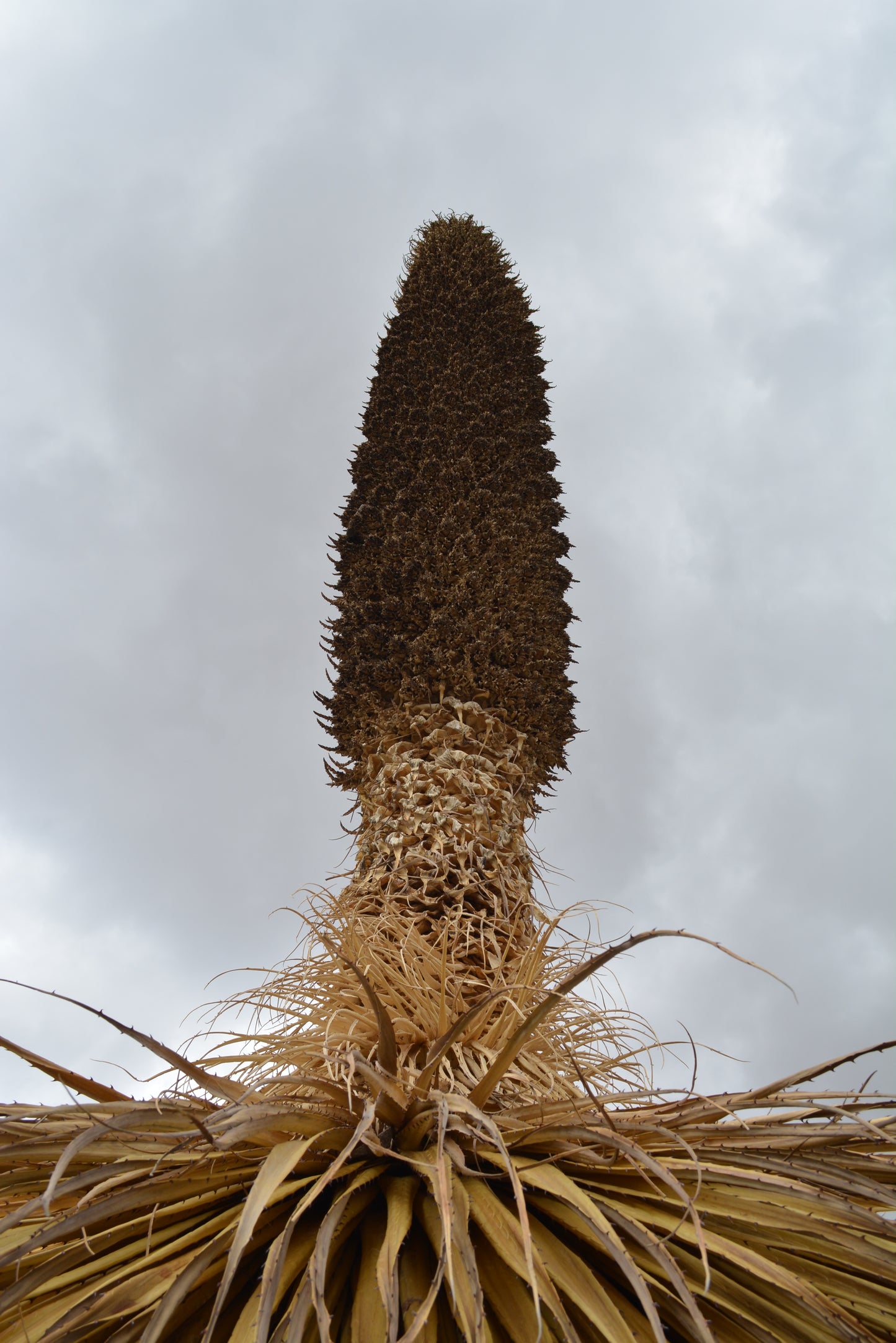Vivai Mola della Badia
Puya raimondii - Queen of the Andes (Pot 15 cm)
Puya raimondii - Queen of the Andes (Pot 15 cm)
Altezza della pianta: 10-15cm
13 in stock
Couldn't load pickup availability
Genus of over 200 species of single-stemmed or tufted succulents from Central and South America. Puya raimondii is a magnificent, imposing evergreen succulent with leaves arranged in a rosette. This species lives in the Andes between 3500-4500 m above sea level, and is the largest bromeliad in the world, reaching 3-4 m in height and 2-4 m in width. In its habitat, growth is very slow due to adverse environmental conditions (low temperatures all year round, predominantly rocky terrain and very little rainfall), but in cultivation it grows rapidly. The elongated, curved leaves, up to 250-300 cm long, are light green or glaucous, and have small reddish spines on the edges. After 80-120 years, the plant produces a very large inflorescence up to 10 m high, consisting of thousands of small, creamy white flowers. After flowering the plant dies but persists for a long time with its erect inflorescence and releases with the wind millions of small winged seeds devoted to the renewal of the species. In cultivation the plants have a much faster growth and can flower after only 25-30 years.
Pedoclimatic needs
Grow in the sun in well-drained mineral soil. Rustic species, it tolerates cold and frosts up to -10°/-12°C although it is good to protect the young plants in case of very intense cold. Although the adult plants are very resistant to drought, the young plants during spring and summer benefit from regular irrigation. Being a high mountain species, this Puya in summer suffers temperatures above 30°C and requires open and very ventilated exposures. The Queen of the Andes can be grown on the ground in flower beds or rock gardens, or even in large pots for decorating terraces and balconies.
Botanical information
Botanical name: Puya raimondii
Family: Bromeliaceae
Share










